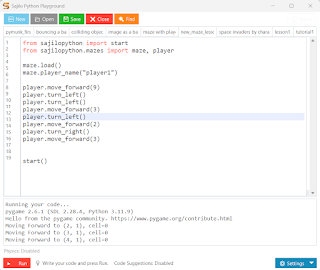At Beyond Apogee, we believe that a strong team builds strong learners. From robotics to rocket launches, app development to AI, none of it would be possible without the dedicated individuals who make up our core team. Let’s introduce you to the passionate minds behind our mission.
Sudip Vikram Adhikari
Founder & CEO
With a background in Computer Science and over 13 years of experience in the field of education, Sudip began his journey in STEAM education in 2012 as an Education Officer at the Everest Science Center, Shantiban. Since then, he has remained deeply committed to making robotics, programming, and space science accessible to students across Nepal.
Ravi Shrestha
Chief Finance Officer
Ravi combines a degree in Computer Engineering with over a decade of experience in finance. At Beyond Apogee, he leads the accounts and finance department, ensuring that our operations run smoothly and sustainably behind the scenes.
Mahesh Thakuri
Astronomy Department Head
Currently a PhD candidate in High Energy Physics at Oklahoma State University, Mahesh is one of the founding members of the Pokhara Astronomical Society. A passionate advocate for astronomy in Nepal, he brings both academic excellence and heartfelt enthusiasm to our space science initiatives.
Saroj Tiwari
Project Manager
Saroj is pursuing his master’s degree in Physics and brings a rich academic background to his role. His enthusiasm for introducing students to STEAM technologies shines through his teaching. Starting this year, he will also be contributing to various research projects within the organization.
Prakriti Shakya
Education Program Manager
With a degree in Environmental Science and a deep passion for technology-driven change, Prakriti has spent the last three years leading, teaching, and innovating at Beyond Apogee. She is deeply committed to making STEAM education inclusive, empathetic, and future-ready for students across Nepal.
Puspa Bhattarai
Educator
Puspa is a BIM graduate student from Morgan International College. She joined Beyond Apogee to be part of a platform that promotes innovative teaching and empowers future-ready students in a creative and supportive learning environment.
Susma Dura
Educator
A Mechanical Engineer by qualification, Susma joined Beyond Apogee in January 2025. Her interest in robotics led her to this role. She is passionate about fostering creativity in the classroom and continuing her personal and professional growth.
Roji Gupta
Tulsi Ram Bhandari
Originally from Bardiya district in Lumbini Province, Tulsi Ram holds a Bachelor's degree in Mechanical Engineering. He currently serves as an Education Officer at Beyond Apogee, contributing to the hands-on learning experience in schools.
Pemba Sherpa
Educator
Hailing from Lukla in the Solukhumbu District, Pemba is a recent BIM graduate who is currently working with Beyond Apogee. She brings a fresh perspective and strong enthusiasm to our mission of spreading STEAM education in Nepal.
Laxmi Chuwan
Educator
Laxmi is a recent graduate in Information Management (BIM) and now serves as an Education Officer at Beyond Apogee. She was drawn to the organization’s commitment to hands-on, innovative learning through STEAM — values she deeply shares.
Himal Ghimire
Educator
Himal is a Mechanical Engineer from Gulmi with a passion for mechanisms and automation. His curiosity for how machines move and operate led him to Beyond Apogee, where he now teaches robotics to school students, helping them explore the same excitement he feels toward technology.
Each of our team members brings something unique to the table — a story, a skill, and a shared passion for education. Together, we’re building a future where students aren’t just learning — they’re inventing, questioning, and shaping the world around them.












.jpg)
.jpg)



